In this article, we will learn about the cultivation details of Brazilian Sweet oranges successfully grown by Mr. Gangadhar of Nalgonda, Telangana. We will learn about his experiences, cultivation details, the care to be taken, investment, and profits regarding Brazilian Sweet orange cultivation.
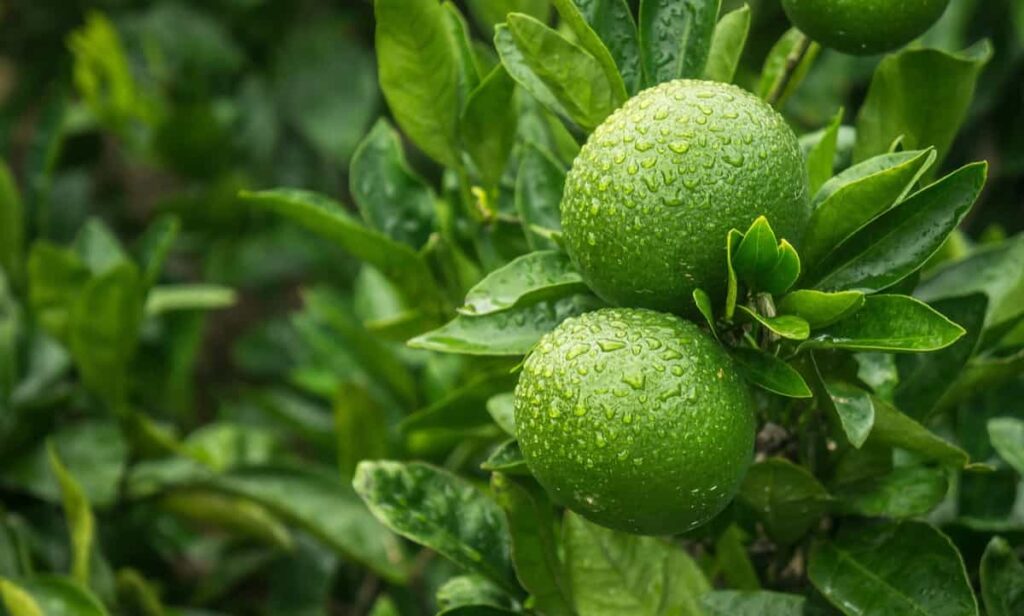
How this farmer earning 8 lakhs from 3 acres sweet orange cultivation
What is the ideal soil for Brazilian Sweet oranges to grow?
Sweet oranges can thrive in various soil types, from the sandy loam or alluvial soils of northern India to the clay loam or lateritic/acidic soils of the Deccan plateau. Light, well-drained soils are ideal for cultivating fruit trees. Soils that are deep and have a pH between 5.5 and 7.5 are good.
They need a pH between 4.0 and 9.0 to thrive but may be cultivated in a wider range. A high concentration of calcium carbonate in the feeder root zone would hinder development. One should stay away from saturated soils. The dark soils of Maharashtra are ideal for cultivating delicious oranges. That’s why sweet oranges thrive on soil that ranges from sandy loam to clay loam and drains well.
What type of climate is ideal for growing Brazilian Sweet Oranges?
The sweet orange tree thrives in tropical and subtropical temperatures and can survive in dry environments. Temperatures between 13 and 37 degrees Celsius provide optimal conditions for healthy plant development. Growing conditions for delicious oranges are optimal between 500 and 1000 meters in height. It thrives in arid regions with an annual rainfall of up to 500 millimeters.
In case you missed it: How to Control Pests and Diseases in Oranges: Causes, Symptoms, Chemical, and Biological Management
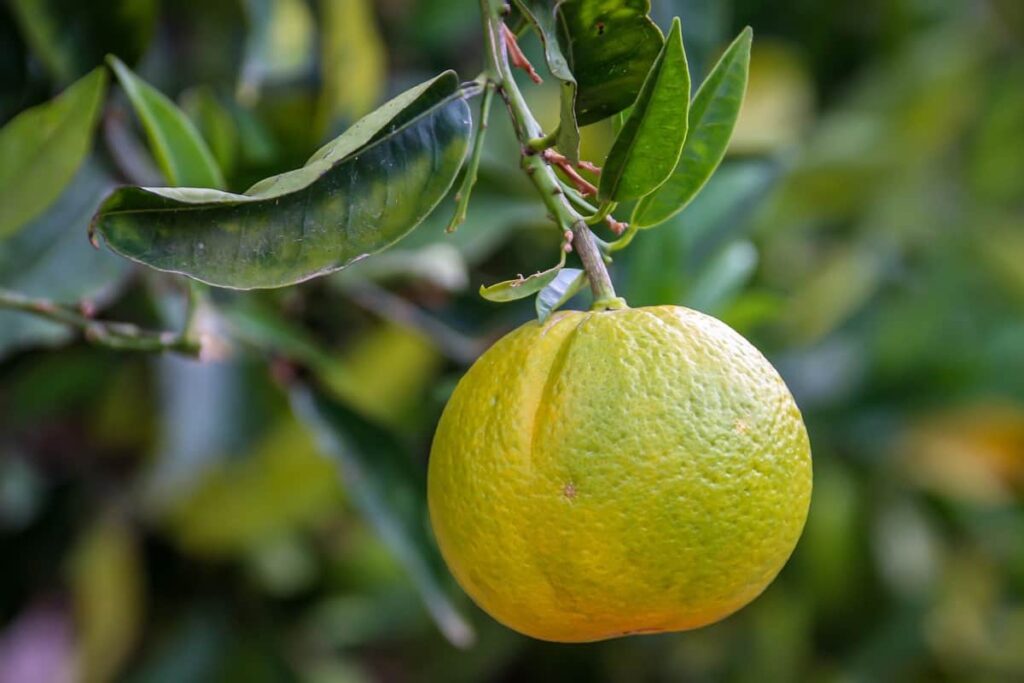
How to propagate Brazilian Sweet oranges?
The most popular technique for the propagation of sweet oranges is called budding, and it may take many different forms, including ‘T’ budding, patch budding, or shield budding. When the rootstock plants of the chosen rootstock have reached the age of one year or when they have budded at the height of around 15-25 centimeters above the ground level. In general, planting should take place between the months of June and March.
Pits in areas with deeper soils have dimensions of 2 by two by 2 feet, whereas in areas with shallower soils, the dimensions are three by three by 3 feet. The pits should be filled with a mixture of topsoil, 20 kilograms of FYM, two kilograms of SSP, two kilograms of neem cake, 25 grams of phorate, and 25 grams of Trichoderma powder. Removing plants with roots from their containers for planting while minimizing damage to the root ball. Immediately upon planting, you should begin to water the soil.
What are the diseases that attack Brazilian sweet oranges?
It’s not uncommon for viruses to damage citrus trees—various fungi like Phytophthora, Cholototrichum, Fusarium, etc. Phytophthora can lead to foot rot, root rot, gummosis, leaf drop, and brown rot in healthy orchards. Lesions caused by foot rot may appear on the trunk up to 60 centimeters above ground, and they can spread down to the crown roots as crown rot if the soil is disturbed upon removing the gray bark.
Use only container plants that come with a root trainer. Always purchase plants from Phytophthora-free nurseries to avoid bringing in unwanted pests. A flowering plant is at least 6 inches tall. Bud union should be kept as high as possible during planting. It’s important to choose well-drained soil and minimize flood irrigation and water stagnation in the basin for extended periods. It is also important that agricultural operations do not cause damage to the tree’s trunk or root system.
Only plant material that has been certified as such should be used to avoid problems with pests and diseases. Apply a drip irrigation system for precise water dispensing. The best way to manage a disease is to catch it early. Thus, regular monitoring of symptoms is essential. Using plant material that hasn’t been contaminated with diseases is important. It is best to avoid flood irrigation to prevent waterlogging and water stagnation. The trunk of a tree must never be submerged in a puddle of water during an irrigation cycle.
Copper fungicides are utilized as foliar spray. Tree basins treated with a fungicide. Incorporating a fungicide into a paste and applying it to diseased tree trunks and branches. During a monsoon season, spray the whole plant with either Redomil 2.5 g/lit or Mancozeb 2.75 g/lit every 40 days. Applying Bordeaux paste on the trunk of a tree just before the monsoon begins is a must. To prevent fungicide resistance, rotating between the two fungicides is best.
In case you missed it: How to Grow Oranges in USA: Check How this Guide Helps Beginners in Orange Farming
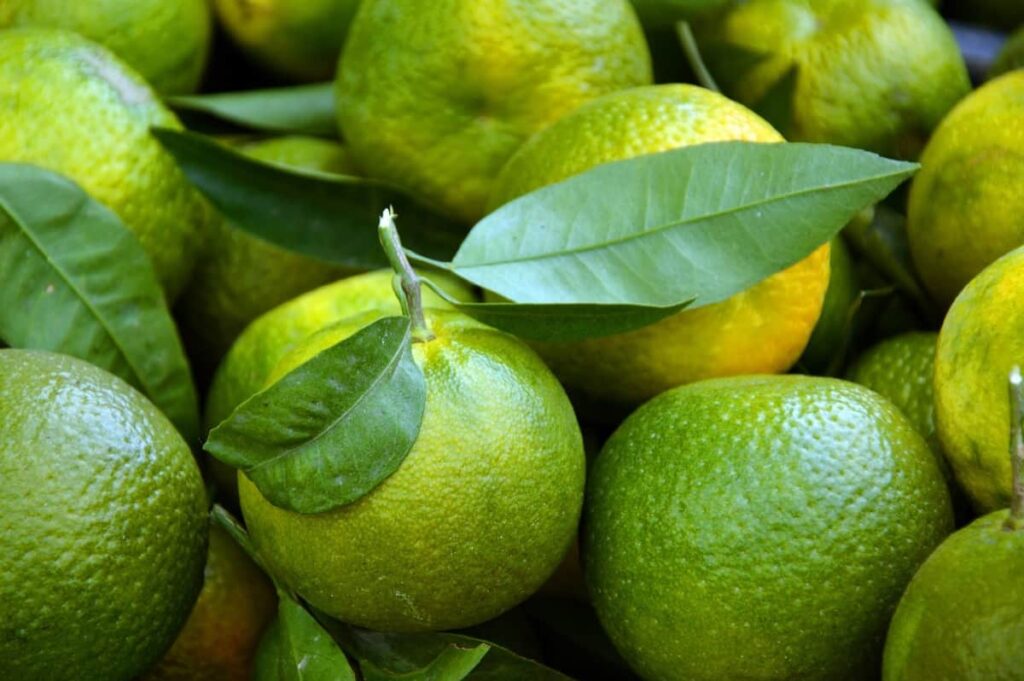
The success story of Mr. Gangadhar
Mr. Gangadhar is a vegetable farmer based in Nalgonda district, Telangana. On his 3-acre farm, he used to cultivate different vegetables, but due to unfavorable climatic conditions, he faced losses now and then. However, he never lost hope. He wanted to cultivate something different. When he consulted with the horticultural officers of his district, they told him to cultivate a new variety of orange, the Brazilian sweet orange.
At first, he was hesitant as he knew a few farmers who faced losses due to orange cultivation. Although those farms were of another orange variety, he didn’t want to risk it. He started investigating different people and gathered some information on the internet with the help of his grandchildren. He saw a few videos of farmers who were very much successful in cultivating Brazilian sweet oranges. He contacted those farmers and visited their farms.
Upon sharing their experiences, he realized that this Brazilian sweet orange was different from normal orange cultivation in terms of quality, yield, and demand. He then started this venture, earning huge profits from cultivating Brazilian sweet oranges on his 3-acre land. Now let us dive into Mr. Gangadhar’s Brazilian orange farm details, and we’ll learn about his experiences, investments, profits, and cultivation details.
In case you missed it: Top 19 Steps/Ways to Boost Orange Yield: How to Increase Fruit Production, Size, and Quality
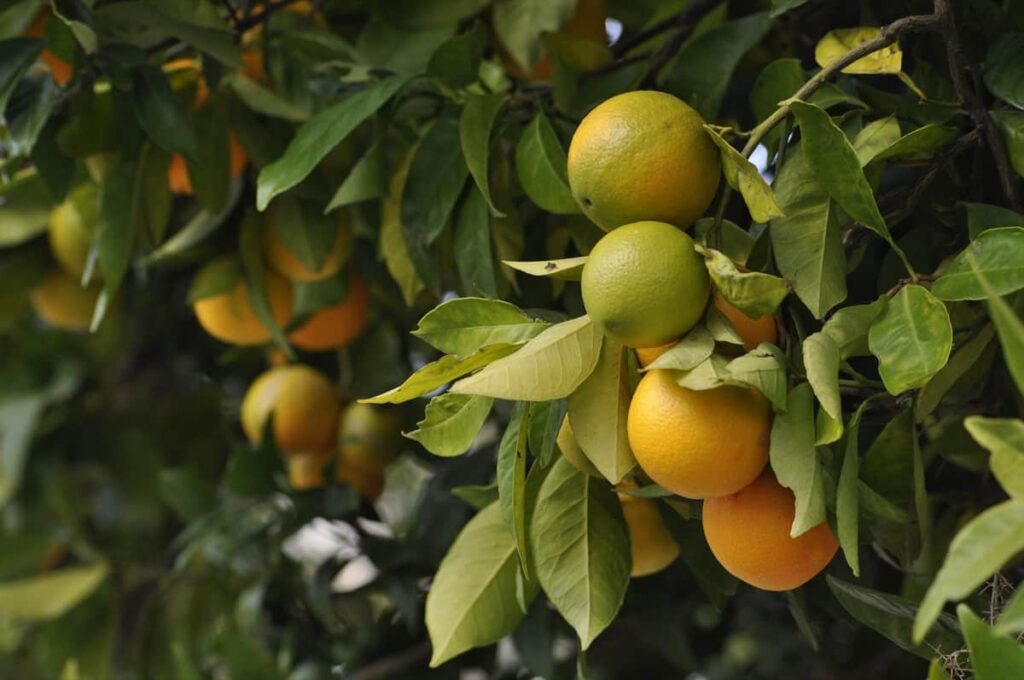
Plant selection details, according to Mr. Gangadhar.
Mr. Gangadhar especially chose these fruit plants because they have a huge demand in the market. When taken good care of, these plants produce higher yields than normal orange varieties. These oranges have very thin skin and are very easy to peel. These fruit plants also are seedless and very juicy. Also, these fruits are bigger in size. 3 to 4 fruits will make up to a kg in weight. Considering these things, Mr. Gangadhar chose these fruits to cultivate on his farm.
Cultivation details of Brazilian Sweet orange, according to Mr. Gangadhar.
Starting with land preparation, the farm should be plowed. After that, you must add chicken manure, animal manure, and cow manure into the field and again plow your field thoroughly. This will help the manure to mix with the soil easily. And once the land is plowed, you have to plan the row spacing according to which the plants will be planted. Mr. Gangadhar bought his plants at 220/- rupees per plant from Jain Company, Jalgaon, Maharashtra.
He went to the company, saw the plants’ results, and chose healthy crops for his farm. The sweet orange tree thrives in humid subtropical and tropical settings and may even survive brief periods of drought. If you want your plants to thrive, keep the temperature between 13 and 37 degrees Celsius. These can produce harvest economically for up to 20 years. Mr. Gangadhar says that these plants are heavy feeders. For normal oranges, only two-time fertilizer applications will be enough per year.
But for this Brazilian Sweet orange variety, you must provide fertilizers four times a year, almost double that of normal orange varieties. The best time to plant these is between June and March. These plants are spaced at a distance of 4m * 3m. This means that there is a 4 m distance between rows to row, and between the plants in each row, there is a 3 m distance. He could stock nearly 320 plants per acre by employing these dimensions in his farm.
Plants need to be watered right after they’ve been put in the ground. For watering, Mr. Gangadhar uses a drip irrigation system. Because of its low application rate, drip irrigation minimizes root zone saturation, says Mr. Gangadhar. In other words, this creates an ideal environment for the plant to flourish. Drip irrigation is useful because it maximizes the effectiveness of fertilizer.
In case you missed it: Orange Farming Project Report, Cost and Profit
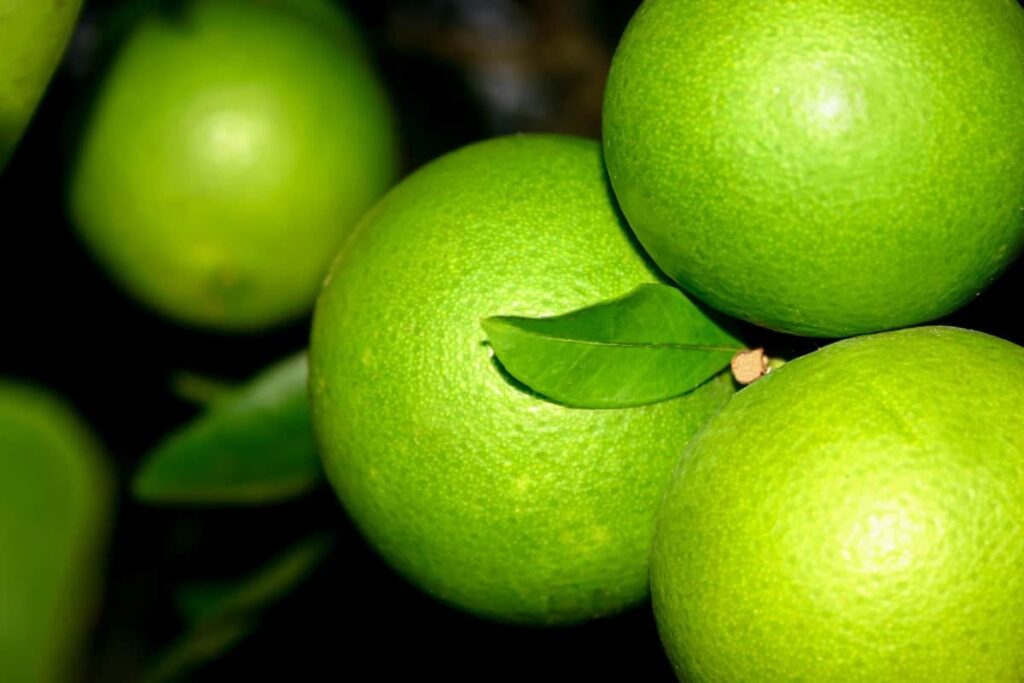
Drip irrigation allows water to be distributed at regular intervals, keeping the soil wet near the plant’s roots, he added. Regarding fertilization, in the first year, 58.30.43 fertilizer should be given to plants; in the same way, in the second year, 87.30.43; in the third year, 90.75.60; from the fourth year onward, 140.90.72 fertilizers should be used along with the farm yard manure.
Mr. Gangadhar says that along with these, a composite nutrient spray that is made and should be spread twice or three times 20 to 25 days apart after the first set of leaves appear will fix nutrient deficiencies, increase the yield and quality of fruits, and correct deficiencies. The third year is when bearing begins. At the end of the fourth year, commercial yields of 5–6 tonnes per acre are expected for this crop, says Mr. Gangadhar. After the fifth year, you should see 8-12 tonnes per acre.
When it comes to harvest, after the first three years, Mr. Gangadhar says that you can expect a harvest of 50 kgs from each tree. After the fourth year, the yield can grow up to 65 kgs from each tree, says Mr. Gangadhar. Also, pruning is essential for this tree, says Mr. Gangadhar. You can also expect a decent yield if you mulch your crops. This will help the soil preserve its moisture. Weeding is essential for these trees. You must ensure that the wedding process is done by hand picking rather than adding chemicals, as the chemicals can reduce soil fertility.
Investment and profit analysis of Mr. Gangadhar’s Brazilian sweet orange farm
Mr. Gangadhar bought his saplings from the Jain company, Jalgaon, Maharashtra, at rupees 220 per each plant, including transport. This alone cost him 2 lakh rupees for his 900 plants on his 3-acre farm, says Mr. Gangadhar. The total investment for his farm was nearly 5 lakh rupees, including labor, as this is a long-term crop that can yield economically till 20 years. You can gain higher profits in the long run.
In case you missed it: Orange Farming, Planting, Growing, Care, Harvesting
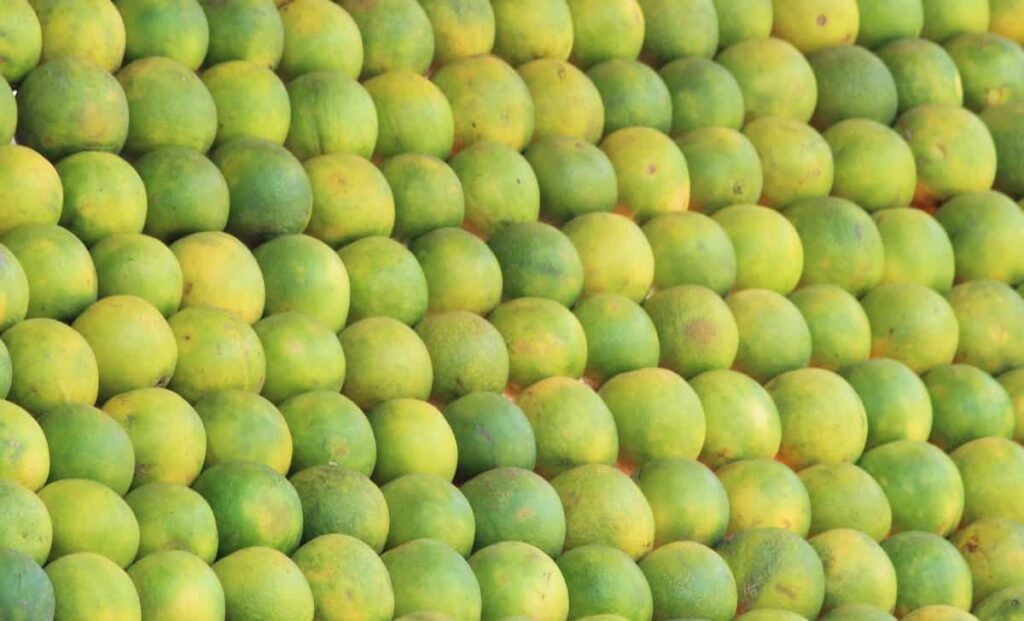
Regarding income, Mr. Gangadhar says that he gets nearly 15,000 rupees per ton as an income from these Brazilian oranges. He gets nearly 45 tons of harvest from his whole 3-acre farm, which means his annual income would be nearly 6,75,000 rupees. And from the fourth year, the profit will increase as the yield grows. Now right now, his profit is only 1,75,000 rupees.
But as all investments are erased from the next year onwards, his profits will be nearly 8 to 10 lakh rupees. This is the potential of Brazilian sweet orange. Mr. Gangadhar says he is looking forward to next year as he is sure he will get higher profits with very little running investment. He is very happy and satisfied as he got all his investment back this year. From next year onwards, Mr. Gangadhar says that his Brazilian orange farm will rise in profits as he has never seen it anywhere before.
- Economical Aquaculture: A Guide to Low-Budget Fish Farming
- 15 Common Planting Errors That Can Doom Your Fruit Trees
- How to Make Houseplants Bushy: Effective Tips and Ideas
- Innovative Strategies for Boosting Coconut Pollination and Yield
- Pollination Strategies for Maximum Pumpkin Yield
- The Complete Guide to Chicken Fattening: Strategies for Maximum Growth
- Natural Solutions for Tulip Problems: 100% Effective Remedies for Leaf and Bulb-Related Issues
- Revolutionizing Citrus Preservation: Towards a Healthier, Greener Future
- Natural Solutions for Peony Leaf and Flower Problems: 100% Effective Remedies
- Maximizing Profits with Avocado Contract Farming in India: A Comprehensive Guide
- Natural Solutions for Hydrangea Problems: 100% Effective Remedies for Leaf and Flowers
- The Ultimate Guide to Choosing the Perfect Foliage Friend: Bringing Life Indoors
- From Sunlight to Sustainability: 15 Ways to Use Solar Technology in Agriculture
- The Ultimate Guide to Dong Tao Chicken: Exploring from History to Raising
- The Eco-Friendly Makeover: How to Convert Your Unused Swimming Pool into a Fish Pond
- Mastering the Art of Delaware Chicken Farming: Essentials for Healthy Backyard Flocks
- 20 Best Homemade Fertilizers for Money Plant: DIY Recipes and Application Methods
- How to Craft a Comprehensive Free-Range Chicken Farming Business Plan
- Brighten Your Flock: Raising Easter Egger Chickens for Beauty and Bounty
- How to Optimize Your Poultry Egg Farm Business Plan with These Strategies
- Subsidy for Spirulina Cultivation: How Indian Government Schemes Encouraging Spirulina Farmers
- Ultimate Guide to Raising Dominique Chickens: Breeding, Feeding, Egg-Production, and Care
- Mastering the Art of Raising Jersey Giant Chickens: Care, Feeding, and More
- Ultimate Guide to Raising Legbar Chickens: Breeding, Farming Practices, Diet, Egg-Production
- How to Raise Welsummer Chickens: A Comprehensive Guide for Beginners
- How to Protect Indoor Plants in Winter: A Comprehensive Guide
- Ultimate Guide to Grow Bag Gardening: Tips, Tricks, and Planting Ideas for Urban Gardeners
- Guide to Lotus Cultivation: How to Propagate, Plant, Grow, Care, Cost, and Profit
- Agriculture Drone Subsidy Scheme: Government Kisan Subsidy, License, and How to Apply Online
- Ultimate Guide to Raising Araucana Chickens: Breed Profile, Farming Economics, Diet, and Care
- Bringing Hydroponics to Classroom: Importance, Benefits of Learning for School Students
- Ultimate Guide to Raising Polish Chickens: Breed Profile, Farming Economics, Diet, and Care
- Ultimate Guide to Raising Australorp Chickens: Profile, Farming Economics, Egg Production, Diet, and Care
- Silkie Chicken Farming: Raising Practices, Varieties, Egg Production, Diet, and Care
- Sussex Chicken Farming: Raising Practices, Varieties, Egg Production, Diet and Care
- Homemade Feed Formulations for Livestock: Discover Cost-effective Starter to Finisher Feed Recipes